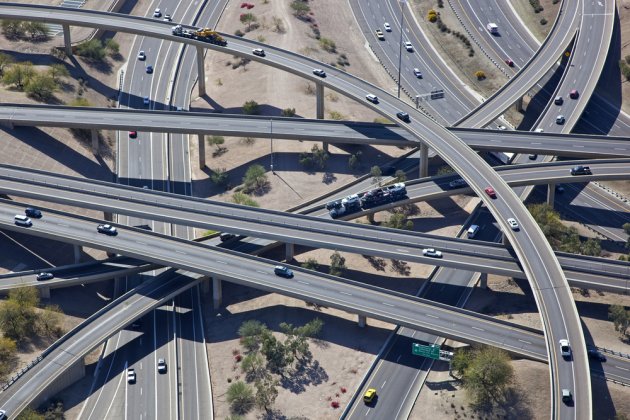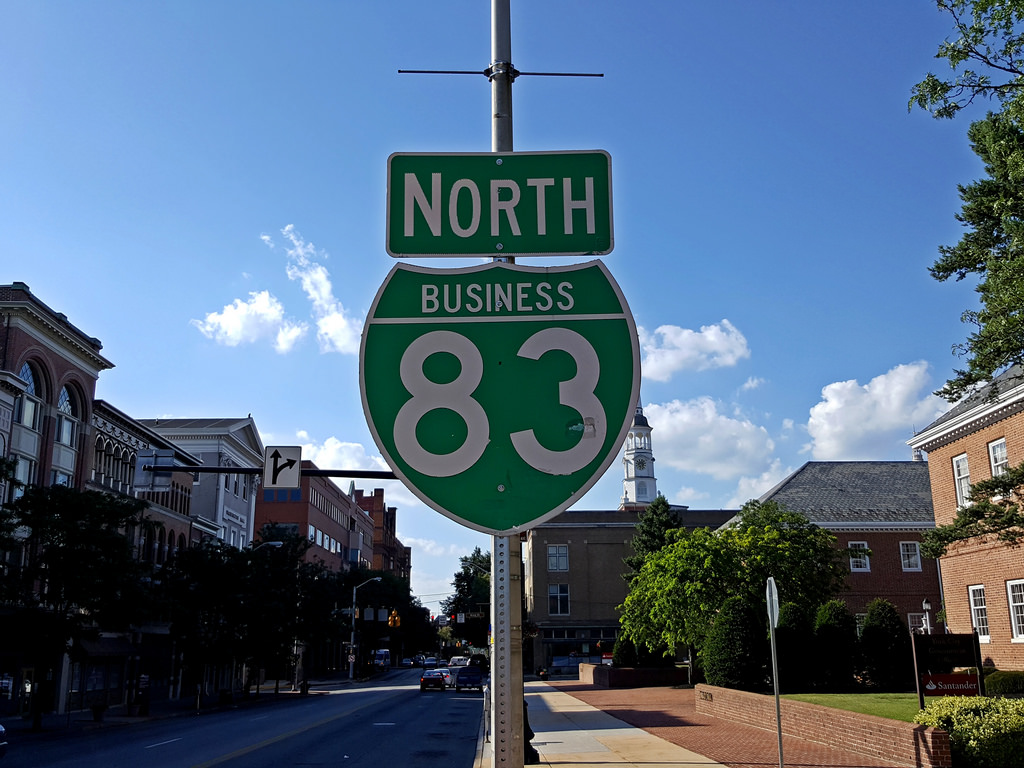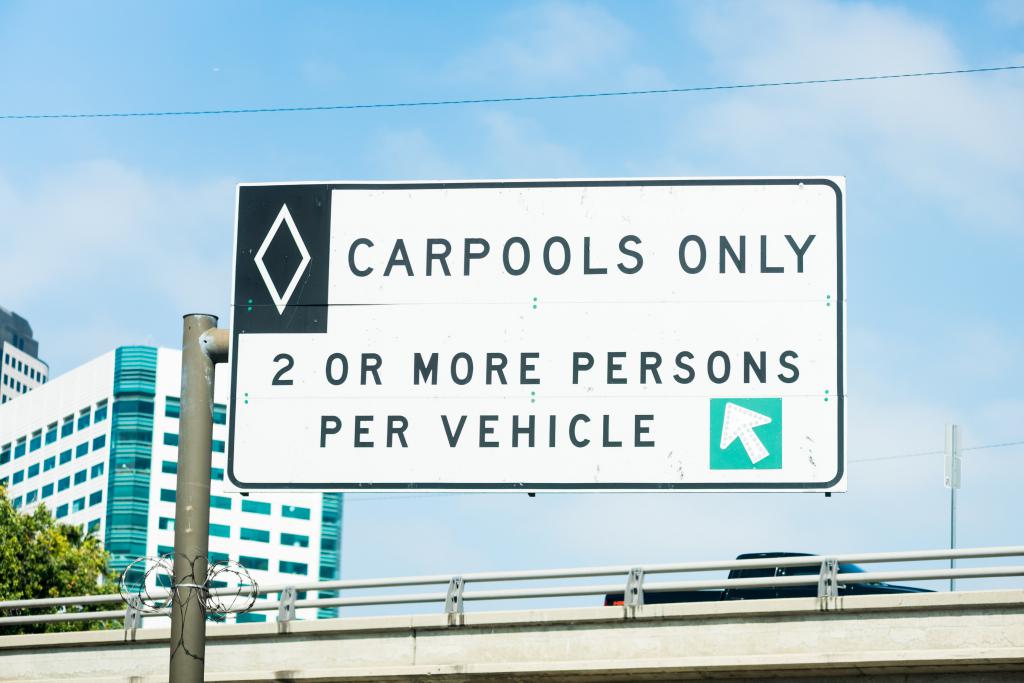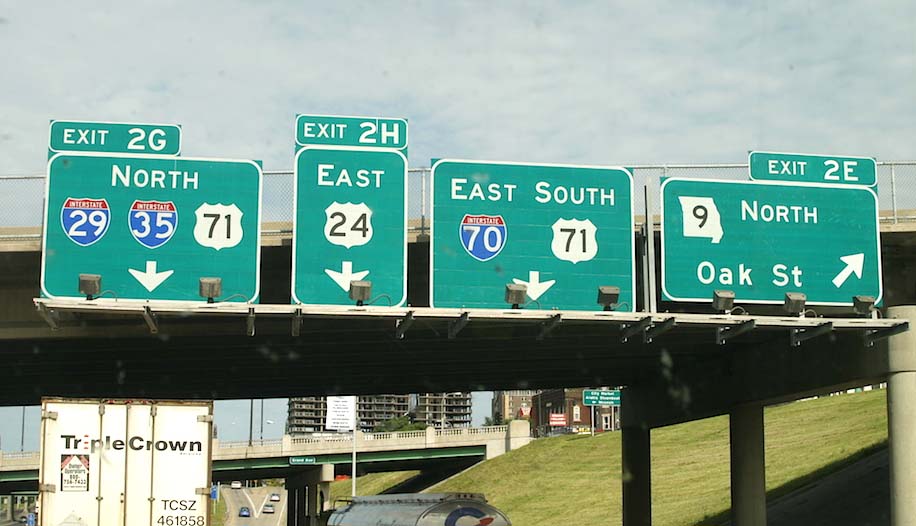The United States is associated with many with endless highways that pierce the whole country, with incredible interchanges, numerous bridges and tunnels. When asked what roads are in America, one can hear exceptionally positive epithets: endless, wonderful, high-class. And that will be true. And all is not accidental, because American roads are considered the best in the world in quality, convenience and safety.
Now it seems that the roads in the United States have always been, but in fact their capital construction began relatively recently - in the 50s of the 20th century. As the availability of cars among the population increased, the need to create a system of highways increased. At the same time, the American government with full responsibility approached this issue, providing the necessary research in the field of road construction. Thanks to this approach, US roads are highly valued around the world, and some countries (for example, China) use the American version of expressways. About how roads are called in America, how they are numbered and how they differ from roads in other countries, read our article.
A bit of history
At the beginning of the 20th century, a car was considered a luxury for Americans, but after the launch of the automobile conveyor by Henry Ford in 1908, the situation changed. The increase in the number of cars in the country contributed to the laying of roads, the first of which were registered and were named after famous personalities or events. Sponsored by the construction, as a rule, businessmen who benefited from traffic. The problem was that there was no master plan for the construction, so the transport arteries turned out to be complex and confusing.

Since 1925, road construction has become more streamlined, federal laws are being developed to create a road system, but due to economic instability and wars, construction progressed slowly. The first president to propose the necessary measures to create a highway system in the country was Roosevelt. In 1941, he created the National Committee for Interregional Highways and set the task to develop a detailed road construction plan for America. In 1953, Dwight David Eisenhower became President of the United States. He knew from personal experience the advantages of German autobahns, so he strongly supported the creation of a national trunk system.
United States Interstate System
The U.S. expressway network is named after 34th President Dwight D. Eisenhower. It was during his reign in 1956 that the Law on National Interstate Highways and Defensive Highways was adopted and the construction of one of the longest road networks in the world was organized. The success of the project was ensured thanks to expensive research, which resulted in the determination of new construction standards, including the type of coating, design of road signs, etc.
Much attention was paid to traffic safety, so the general rules were adopted. Here is some of them:
- to exclude uncontrolled hit on the highway, all entrances and exits should be accurately regulated;
- to avoid head-on collisions, roads should be separated by a concrete spacer or a green stripe;
- to ensure a safe exit from the hills, a maximum level of descent of 6% was determined, the maximum load of 36 tons;
- road crossings should have high-speed connections, loops with turns of 90 or 180 degrees are unacceptable;
- the highway should not be interrupted and have an access road running parallel to the main highway;
- the left and right curbs should have a minimum width of 1 and 3 m, respectively.

The law has established uniform road construction standards, routes, and funding sources for all states. The minimum number of lanes in one direction and the width of each lane were determined, the requirements for a reserve lane were developed, the numbering system and road signs were unified, and a speed limit was set. This infrastructure project is the largest and most expensive project in the world and at the same time the most expeditiously completed: the bulk of the highways was built in just 35 years!
Construction is currently underway in areas where expansion or duplication of highways is required. Nebraska was the first state to complete the construction of a projected road. In the fall of 1974, the track was put into operation. And in 1992, the construction of the originally planned system was completed. Nevertheless, work is still ongoing in some areas. Today, the US Interstate Highway System connects all US states. Highways have a minimum of two lanes in one direction, and lanes in opposite directions are usually shared by a wide lawn or high concrete fence. The congresses and arrivals on highways and city streets have corresponding signs, knowing which it is quite easy to navigate in the direction of travel.
Interstate Numbering
Wisconsin is the first state to introduce the numbering of its highways back in 1918. A little later, in 1926, the most important transport arteries of each state received their numbers and formed the US highway system. Today, the interstate numbering system is a number and a letter, or a combination of a number and a letter.
The main interstate highways are indicated by the letter I and have a numerical value less than 100. West-east directions have an even numbering, increasing from south to north, and end with the number 0 if the road passes in this direction through the whole country. The main routes from east to west are Los Angeles, California - Jacksonville, Florida (I-10), San Francisco, California - Tinek, New Jersey (I-80), Seattle, Washington - Boston, Massachusetts (I- 90).
The north-south directions have an odd one- or two-digit numbering, increasing from west to east, and signs ending in 5 are the main routes in America in this direction. Popular routes from south to north are San Diego, California - Blaine, Washington (I-5), San Diego, California - Sweet Grass, Montana (I-15), Laredo, Texas - Duluth, Minnesota (I- 35), New Orleans, Louisiana - Chicago, Illinois (I-55), Mobile, Alabama - Gary, Indiana (I-65), Miami, Florida - Sault Ste. Marie, Michigan (I-75), Miami, Florida - Houlton, Maine (I-95).
Above 100, branches or auxiliary highways are numbered. Moreover, if the branch does not return to the main highway, then an odd number is added to the figure indicating it, if it returns, an even number. In other words, the first digit indicates the nature of the road, the last two indicate the main road.
For example, in the figure above, the red line shows the main track I-5. Auxiliary roads are indicated by a blue line, and cities by a gray line. If you turn onto the I-705 road, then you will not be able to return to the main highway, since this is a check-in to the city. But on the bypass (I-405) or the ring road (I-605) you can return to the main highway. Knowing these nuances, you can avoid mistakes in movement.
Each state has its own speed limits. The maximum speed on highways is 130 km / h, the minimum is 60-80 km / h. You can ride "with the breeze" in Texas: the permissible speed is up to 129 km / h, but in Cumberland, Maryland you can not accelerate by more than 64 km / h.
Hawaii, Puerto Rico and Alaska
The U.S. Interstate Motorway System extends to unrelated U.S. territories - Alaska, Hawaii, and Puerto Rico. Hawaii freeways are denoted by the letter H and unite significant cities and towns, military and naval bases of Oahu, the state’s most populated area. Highways in Alaska and Puerto Rico have A and PR prefixes in their names and are numbered without taking into account system numbers and division by odd and even. Construction standards are also not valid here.
Classification of American roads
The length of roads in America is 6,662,878 km according to 2016 data. In this indicator, the United States is the undisputed world leader. India and China, in second and third places, are still behind the United States. For comparison, the indicator of Russia is 1,452,200 km.
There are several types of roads in America:
- Interstate Highways (Interstate Highways, denoted by index I) are routes constructed and financed by the state. Specific standards approved for such routes ensure safe, high-speed traffic. Repair work and maintenance of interstate highways comes from the state budget to which this or that road section belongs. Interstate Highways is part of the US National Highway System. These roads are of paramount importance for the country's economy and security and provide continuous traffic.
- US Highways (US Highways, denoted by the US index) are highways that are usually used to travel medium distances within the same state. Maintenance and repair of these roads is carried out by local and state authorities.
- State Highways are state routes built according to different standards depending on the load of roads: in states with high congestion, routes correspond to interstate highways, in states where roads are less used, road quality is much lower.
- Local roads (Local Road) - these are all other roads, which can be either multi-lane or unpaved, laid inland. Maintenance and repair of roads is carried out by local authorities.

Of great importance to the United States are the first two types of roads - Interstate Highways and US Highways. They are built using special technology, proven over the years, and concrete pavement provides strength and durability to roads: overhaul of the roadway is not required for 30-40 years! Such tracks are designed for high throughput and can withstand relatively high loads. Layered paving allows roads not to sag over time. Their improvement is largely ensured by a competent tax policy, which includes toll roads, car taxes, special tolls (for example, gas stations pay a small percentage of sales to the road construction fund), private investments, etc.
Thus, highways are also a cost-effective enterprise. Road production is an expensive undertaking, but all investments pay off. For example, when laying a route, motor transport infrastructure (gas stations, cafes, motels, etc.) also develops, which creates new jobs that reduce unemployment in the country. Road safety helps prevent accidents and thereby save on insurance and health care.
Motorway business
On American roads, you can see green shields with the inscription Business. Business highways are a category of special roads that are used if a regular road bypasses the city. Branches and ring business roads run through central business districts.
The Mother of American Roads (Route 66)
Changing the status of some roads leads to the reduction or elimination of part of the American highways. These routes include the famous Route 66. It once connected Chicago with Los Angeles and gained its high status during the Great Depression. In 1985, Route 66 was decommissioned due to the duplication of most of the route with modern interstate highways, but thanks to the caring public, the route has retained its historical significance. This is no coincidence, because the legendary highway is the first full-fledged highway.

Federal Highway 66 has become popular thanks to literature, cinema and songs. A trip along Route 66 is like a time travel in the middle of the 20th century. True, those wishing to ride exactly on the old road must follow the signs "Historical Highway 66", and even better - to study the route in detail, for example, on the website www.historic66.com. The description of the road given in it will help you to stay on track, crossing all 8 states, as well as not to miss the main attractions of Route 66, including all kinds of museums, antique shops, old gas stations and, of course, picturesque landscapes.
Toll road
Toll roads in America have the word toll in the name. More than half of the states have toll roads, while in the west and south of the country there are fewer. Typically, toll roads are built around large cities or inside them, and travel along long tunnels and bridges is also paid. There are several ways to pay for a road:
- cash payment on the spot (toll booth booth, etc.), while it is necessary to follow the signs on the road, which will tell you what payment is accepted on certain lines;
- payment on the official website of toll roads (http://thetollroads.com/) 5 days before using the toll road or within 5 days after use;
- automatic payment by means of a special device (transponder) to which the account is attached (lines with the designation EZPass, iPass, SunPass, K-Tag, PikePass, etc.).
The latter method, of course, is the most convenient, but its minus is that, for example, the EZ Pass transponder operates along the entire east coast of America, but it will not work in Oklahoma or Florida, and you will have to look for an alternative.
Some traffic rules
In America, developed a detailed system of penalties for traffic violations. There is a system of points, which, accumulating, in addition to fines, can lead to a temporary ban on driving, re-passing the standards, etc. Americans are considered responsible drivers with a high culture of behavior on the roads and try not to violate the rules. Travelers should also be aware of the restrictions so as not to pay large amounts of fines and not endanger themselves and others.
For example, on roads with indices I and US, you can not stop on the sidelines without good reason. In the most picturesque places there are observation platforms, you can stop at them. In case of emergency, a stop is made on the right side of the road. When a broken car is located on the right side of the road, drivers need to leave for the lane to the left. And if there is any company car on the side of the road that cannot be overlooked due to bright lights, then you need to reduce the speed to 80 km / h if you can’t change to the left lane. The leftmost lanes (carpool) on some roads are fast. Often they help to avoid traffic jams, but you just need to remember that you can go along this line when there are 2 or more passengers in the car (for some states 3 or more). If you ride the karpul alone, you can get a fine. There are signs on the road, so you need to be vigilant.

In general, all roads in America are riddled with signs. They were developed after numerous studies on the subject of the most effective human perception of colors and fonts. Therefore, all designations are quite readable, the main thing is to remember what a particular name means. For convenience, informational boards are installed on the roads that inform about the situation on the road (accident, traffic obstruction). There are also shields with information about which establishments are located at the exit from the motorway. In terms of institutions in America, everything is very thought out. You can always find a place for a snack and rest, toilet or overnight. There are special round-the-clock service areas that can be reached by moving in both directions. In these areas, free parking, shops, toilets. Cameras and traffic controllers allow services to quickly respond to all traffic incidents and immediately send assistance.
Another interesting feature of roads in America: during the evacuation during natural disasters on one side of the highway, the direction of movement changes. All lanes begin to move in one direction - from the scene of the disaster to a safe area. The Contraflow lane reversal was introduced by the US government in response to the failed evacuation of the population in 1998 during a hurricane. Then more than 600 people died. All signs in the USA are controllable, therefore, in case of adverse weather (ice, fog, etc.), the speed limit can be adjusted downward.
Conclusion
Highways in America pass through cities and, intersecting each other, form a convenient transportation network through which you can quickly get to the right place in the city or leave it. Most Americans prefer highways to rail. The most common division of roads: local and federal. The local authorities are responsible for the maintenance and repair of the former, while the federal government is responsible for the latter. Interstate highways are maintained in perfect condition and meet accepted building standards. American roads are considered the most convenient and safe. Some tourists come to the States only to ride on high-quality routes that have gained popularity around the world.

Thanks to a well-thought-out toll collection system, the road construction fund is updated annually. At the same time, the money does not evaporate in an unknown direction, but goes to the maintenance and repair of roads. An important factor is the technology adopted in the USA for the construction of the main urban arteries, thanks to which the quality of roads in America corresponds to the highest level. Concrete roads last much longer, and major repairs are not required for a quarter century. Safety is another highlight of American roads. Despite the costly means by which safety is ensured, all investments pay off, since the prevention of emergency situations helps to save on healthcare and insurance and to preserve the life and health of its citizens.